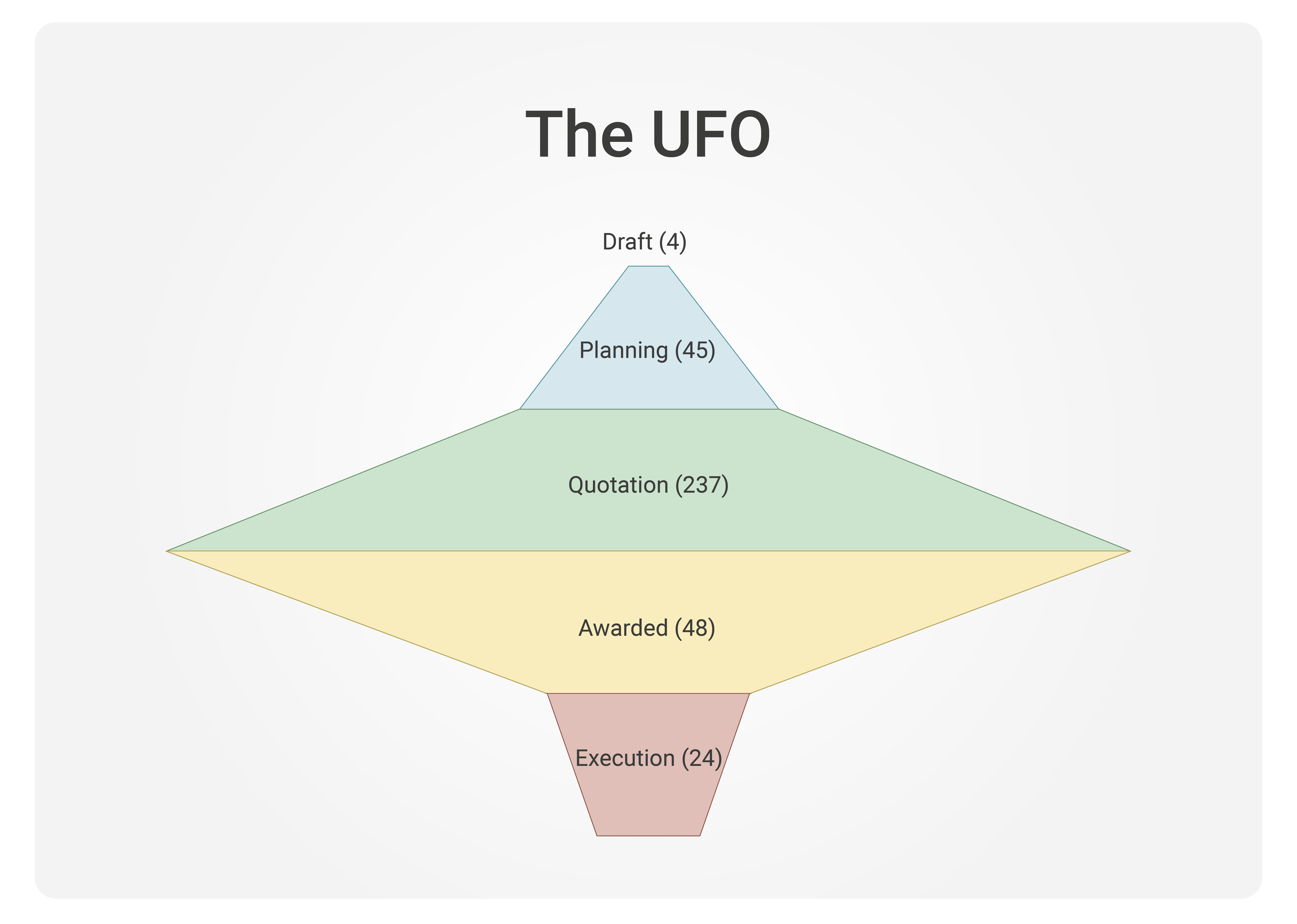
How to Build the Ideal Construction Sales Pipeline – and Integrate It with Your CRM
Every sales pipeline tells a hard truth about how a sales team actually works. When built the right way, it’s far more than just a collection of deals, it’s a living system that captures how your business creates value.
In the construction industry, where complex projects, long sales cycles, and multiple stakeholders are the norm, the right CRM setup can determine whether opportunities turn into real revenue or remain invisible in the pipeline.
In an ideal world, a CRM pipeline would mirror real sales practice:

Unfortunately, this ideal scenario is rare. Experience with hundreds of sales teams in the construction industry shows that three common pipeline structures repeatedly hold companies back from reaching their full potential.
Visualizing the CRM pipeline can help uncover these patterns and highlight opportunities for improvement. This simple yet powerful exercise often reveals surprisingly clear insights into existing sales processes, and creates a true “aha” moment for many teams.
The following sections explore three CRM pipeline types most frequently seen in construction sales, and what they reveal about process, structure, and data alignment.
1 | The UFO
A type that appears far too often? The UFO.
In this case, teams only start using their CRM actively when a quotation is about to be sent.
So what’s wrong with this and what’s the real impact?
The result? A pipeline that may look full on the surface, but delivers little real performance.

2 | The Margarita Glass
At first glance, the Margarita Glass pipeline looks like a success story: it’s full, and deals seem to be closing at a healthy rate.
However, a closer look often reveals a deeper issue in how opportunities are managed.

3 | The Zigzag
In many organizations, someone once defined what the “perfect pipeline” should look like. Since, every deal has been forced through the same predefined stages.
The problem? These stages often have little to do with how sales actually happen in the real world.
The result is a CRM that doesn’t reflect reality:
An effective CRM doesn’t need stages that look good on a whiteboard.
It needs stages that mirror what truly happens, from first project discovery to contract close.
Once the pipeline mirrors the real sales process, the impact is immediate:

From Pipeline Chaos to Revenue Clarity: Building a CRM That Reflects Real Construction Sales
The UFO, the Margarita Glass, and the Zigzag may look different, but they all share the same underlying issue: a gap between how sales actually happens and how it’s represented in the CRM.
This gap can only be closed when technology, automation, and deep industry expertise work hand in hand. That’s exactly where Building Radar comes in with its Revenue Engineering approach. By combining AI-powered data, intelligent processes, and a structure grounded in real-world sales practice, Building Radar transforms chaotic pipelines into reliable engines of growth.
With Building Radar, sales teams get a CRM that is automatically enriched with early construction project data, verified opportunities, and decision-maker insights, creating a true connection between field activity and CRM reality.
A CRM reaches its full potential when it reflects the real sales process, empowers teams, and turns every stage into a measurable step toward revenue. Building Radar provides the foundation for that, with accurate data, clear structure, and an approach that makes sales predictable and scalable.
Integrating Construction Data and CRM: How Building Radar Connects the Two
The most effective sales organizations don’t treat their CRM as an isolated tool. They connect it to the real world, to live project data, verified opportunities, and the people behind them.
Building Radar integrates directly with major CRM systems, syncing construction project data, bidding information, and contact insights seamlessly into your existing workflow. That means:
Instead of spending hours importing leads or qualifying outdated data, sales teams can focus on what truly matters: turning construction intelligence into measurable revenue.
How Building Radar Works with Your CRM
Whether you use Salesforce, HubSpot, or another CRM, Building Radar connects directly to your sales ecosystem, integrating construction data with CRM pipelines and providing the clarity teams need to grow with confidence.
By integrating Building Radar’s AI-powered project intelligence, sales teams in the construction industry gain a complete, real-time view of upcoming projects, active bids, and relevant stakeholders, all inside their CRM.
This seamless integration bridges the gap between construction data and CRM systems, helping businesses track opportunities earlier, qualify them faster, and close them more efficiently.
Now is the time to align your pipeline for growth.
Discover how Revenue Engineering with Building Radar can turn your CRM pipeline into a true growth engine.
Relevant Resources
- Building Radar Official Website
- Building Radar Features
- Building Radar Construction Projects
- Building Radar Tenders
- Building Radar Reference Customers
- Building Radar Insights
- Building Radar Revenue Potential Calculator


.jpg)